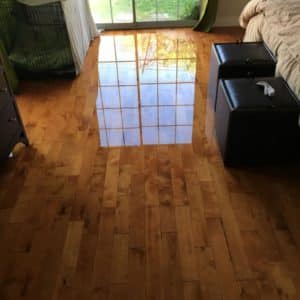
A wonderful thing we take for granted: you can turn a handle and have a nice fresh stream of water running through your faucet for bathing, cooking, cleaning, drinking, and many other uses. But do you ever wonder: That’s a lot of pressure! How is this possible?
In most of Atlanta, water pressure at our fixtures is made by gravity. Water towers are elevated to create head pressure so there is a constant, steady flow of water outward. The plumbing code states that no pressure should exceed 80 PSI (pounds per square inch). However, all homes are at different elevations, especially in a hilly city like Atlanta. So, pressures can vary from about 40PSI to 160PSI.
But high water pressure is a good thing, right? We all love nice high water pressure when we shower, right?
Not necessarily. Pipes are only designed to handle water pressure of 60 to 80 psi. Anything over 80 will cause undue stress on your pipes, leading to leaks, early failure of pipes, appliance issues, voided warranties, etc. (What you really want in your showerhead is high flow. I write about pressure vs flow here )
So, every home must be equipped with a Pressure Reducing Valve (PRV) where the water service line comes in. The PRV ensures your home’s water pressure is in that safe 60 to 80 PSI range. Whenever True Plumbing arrives for a job at your home, we will always check your water pressure to make sure your PRV is functioning properly—just like a doctor who checks your vital signs during an outpatient visit.
We can run 3 tests to figure out why high water pressure may exist in your home:
Static pressure is measured when no water is running. To test this, we simply put a pressure gauge on your hose bib downstream of the PRV and take a reading. If it is between 40PSI to 80PSI, the test is passed.
Dynamic pressure is measured while there are 2 to 3 fixtures running in the home. To do this test, we do the static test and then turn on 3 faucets while the pressure gauge is still on the system. If the needle drops more than 8PSI while water is flowing, the PRV may be defective or there could be some other flow restriction, such as a halfway closed valve, on the incoming water line. In some cases, there could be a kink or heavy corrosion on the water service line—more reasons why hiring an experienced plumber is valuable. More detail about other possible flow restrictions here. We have to use our “plumber 6th sense” to figure out the root cause of many issues that may seem simple on the surface.
Thermal expansion is another cause of high pressure in your water lines. This one is more mysterious, and many plumbers don’t know how to test for it. When cold water enters your water heater, it has less volume than it does once it is heated. Liquids cannot be compressed the same way gasses can, so if there is no extra space for the water to take up, it pushes, sometimes in extreme ways, on your pipes and fixtures. In some extreme cases we’ve seen, the pressure can go over 200PSI and cause floods due to burst laundry, toilet, or sink faucet supply hoses. My sister once came home to a flood in her house due to a burst faucet supply hose in her bathroom sink. “The worst part is it was the hot water hose, and we have a tankless, so my house was literally steamy when I came home to the flood,” she told me.
My sister’s flooded bedroom.
We have even seen water heaters that have been bowed or misshapen from the extreme pressure.
Our test of this water heater showed pressure levels that were too high.
Fortunately there is another device that protects from this effect called a thermal expansion tank (TET). It is a metal tank about the size of a basketball with a rubber bladder of air inside. This air bladder compresses when pressure rises, giving the water more space without a big increase in pressure.
To test for thermal expansion, we want to see if the pressure rises as the water heater is firing. So, with the gauge on the hose bib, we run hot water for about 5 minutes. Then we turn the faucets off and watch the pressure gauge for about 5 minutes while water pressure is static. The needle should not move more than 2 to 5 PSI. If there is thermal expansion, the pressure will slowly rise 10 to 50+ PSI and eventually exceed the 80PSI mark.
Over 80% of water pressure issues in Atlanta homes we service can be solved with a new pressure reducing valve (PRV). It’s a simple install that takes under 2 hours and costs around $450–well worth it for long term peace of mind! If you’re in the Atlanta area and concerned about water pressure in your home, call or text 770-PLUMBER for help.



